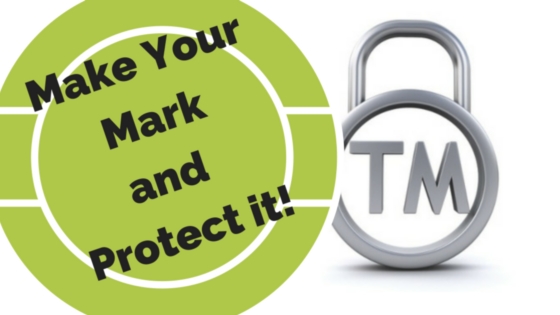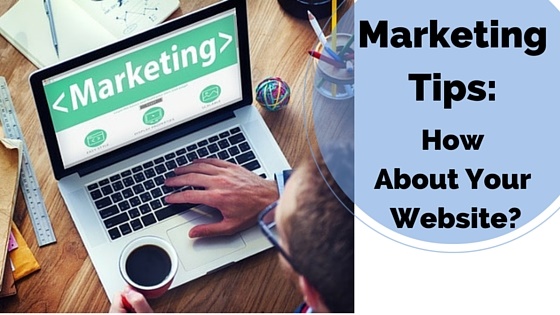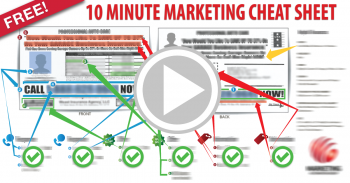Category Archives for Marketing
Eight Hot Holiday Marketing Tips for Small Business Owners
 The holiday season is underway. Keep revenue numbers high with the right marketing moves for this buying season.
The holiday season is underway. Keep revenue numbers high with the right marketing moves for this buying season.
Whether you sell products or services, the holidays are a good time to show existing customers you care—while you spread the word about your business to new leads.
Throughout the year, I work with entrepreneurs to improve business processes and increase income. Those who know me, know my goal is to make a millionaire out of each of my clients.
I help small business owners understand their business and offer a value proposition that makes them money. Knowing the desires, and behaviors, of customers and clients is important—especially during the holiday season.
The economic picture this season is dicey. Both Price Waterhouse and Deloitte predict consumers are planning to spend about what they did last year, with a lot of room for variation. There is increasing growth at the premium—and bargain—ends of the spectrum, with both groups looking for creative ideas and decent deals.
Top Eight Tips for Holiday Marketing in 2015
During the holiday crush, try these tips to boost your client base—before and after the holidays:
1. Watch your channels: Omni-channel marketing means using multiple channels to attract, engage, and serve your customer. Across screens, from corded computer to mobile app, entrepreneurs offer convenience, rewards, discounts, coupons, and information to ease the shopping experience, whether online, brick and mortar, or both. According to the National Retail Foundation (NRF), just about half (or 46 percent) of all browsing and buying this holiday will take place online. Buy buttons and links between e-commerce and physical stores give customers a super way to find what you have to offer.
2. Delivery options: Free shipping is offered by many retailers, and free is tough to beat. If not waiving, or deeply discounting shipping costs, consider online purchase and in-store pick-up. This offers your customers the convenience and pricing they want, and improves in-store sales when additional items are purchased when a product is picked up, or returned. Shoppers in the 18 to 35 year old range are more likely seeking same-day or two-day shipping—giving you an opening to provide premium service.
3. Discounts and self-gifting: With consumer confidence slightly higher, the average amount of money shoppers intend to spend on themselves has gone up. Consider discounts like buy two, get one free, and other variations to appeal to shoppers looking to take home a little something for themselves. Many retailers, like Walmart and Macy’s, already started price-matching or discounting earlier this year.
4. The gift everybody wants: Gift cards continue to be sought after and appreciated. In plastic or digital form, make it easy for your clients and customers to buy gift cards for products or services. Gift cards are a great way to reach beyond your current client base
5. Subscriptions: Subscriptions are not just for magazines anymore. From flowers, chocolate, wine, coffee, socks, and snacks—subscriptions for full, or sample-size products are a great way to showcase and introduce products, build loyalty, upsell—and convert new leads. Subscriptions are a gift that continues to give—and thrill—recipients throughout the year.
6. Location, location, location: Online, big box, and malls are expected to be profitable locations this holiday season. A holiday survey from Deloitte reports 30 percent of respondents are planning to shop at pop-up stores, festivals, flea markets, swaps, and other non-traditional retail opportunities. Think about “invitation only” events, or target client segments for special events.
7. Service, service, service: From web to store, offer value to your customer or client by making their buying journey easier. Use marketing automation on your website to encourage sales, offer bundled products, and close the deal. Whatever your product or service, be sure your website is easily browsed, gifts are categorized, and your shopping cart tech is fast.
Websites with an “Under $50 or $100” page could attract buyers who may stay longer and buy up. Use your client list and visitor information to send countdown Tweet and email gift ideas, discount offers, and surprise perks. Be clear about shipping dates and deadlines—and do your best to help last minute shoppers, even if they are outside your posted shipping deadlines. Have a store “open house,” plan an event with nearby merchants, and feature a product, or service, on a weekly or daily basis. Use social media to get the word out. Make the value irresistible.
8. Don’t forget the fruit basket: As the holiday nears, use automated tools to ensure your established client base hears from you. Fruit baskets, cheeses, cookies, cards, and discount coupons are all great ways to let customers and clients know you remember them—and that you hope they remember you in the coming year. If you have a physical location, show your spirit on the shopping days prior to the holiday—offer cookies, candies, or other treats—to all those who take the time to check out your store or service. The kindness is appreciated—and may be returned.
As time to the New Year ticks down, make a resolution to boost your income, and spend more time doing what you love—not worrying relentlessly about business survival. When you are ready to earn more money and a better life from your business, I hope you will call me at 585-633-7563.
Yours in profit,
Bob Britton
Why You Should Engage Your Employees
 Make and save money by reducing employee turnover. How do you do that? Increase employee engagement.
Make and save money by reducing employee turnover. How do you do that? Increase employee engagement.
My job is helping entrepreneurs create strong business plans, work smart, and use tech efficiencies to market in a way that makes them money. It is no secret that my goal is to make my clients millionaires.
So why talk about employee engagement? That’s just a human resources issue, right? On the contrary, as a small business owner, employee engagement should be near the top of your list of priorities.
An engaged, satisfied workforce creates profit for you, and reduces budget spend from employee churn. The hiring and training process takes time and money out of your pocket, while a valued employee is an asset.
An engaged workforce helps your bottom line
Engagement is the measure of commitment and satisfaction your employee feels for your small business. The smaller your business, and fewer your employees, the more essential it is that the people you hire want to grow your business with you.
We have all known co-workers, and maybe employees, who hate their jobs, scraping by with minimum effort to collect the paycheck. These types of characters bring others down, and can impact your revenue. Let’s look at four engagement profiles developed by Quantum Workplace:
- Engaged employee: Engaged employees are those who buy into your company culture, purpose, and goals. Committed to their job—and moving the organization forward—they support business and workplace community efforts. These workers are happy where they are, striving to do their best, and usually become assets to your business.
- Contributing: Doing what they need to do, contributing employees support your business, but do not fully embrace your value proposition. Contributing workers are doing a good job—but could do, and add, more if they were better engaged.
- Disengaged: Workers who are disengaged may already be looking for a different job. If highly skilled talent in your company is disengaged, your company is at risk for losing the talent, and restarting the recruitment and training cycle. Disengaged employees can still be met, and engaged, if the situation is noticed, and remedied in time.
- Hostile: Hostile workers have an attitude about your company and do not mind sharing it. Reducing your profit, and damaging your company culture, these are workers who have a mostly negative impact as soon as they walk in the door in the morning.
Are your employees engaged?
You might employ only hourly or salaried workers, or a mix of both. Although compensation and time spent on the job may be different, the aim is the same—engagement.
Companies that make employee engagement a high priority build a stronger workforce, improve client and customer service, enjoy better communication, and see better productivity. All these measures are the result of top-down efforts by owners to maximize their profit by valuing their employees.
Whether yours is a large or small shop, consider these tips to create a workforce better aligned with the overall goals and success of your company:
- Know your employees: While you work daily with some of your employees—would they say they know you? Do your employees, even if they are hourly, feel their contribution is important to the business, and to their own well-being? Being known, and valued, is a critical aspect of employee engagement.
- Do you have a company culture? It does not take a 100-member firm to create and enjoy a company culture. Start with fair compensation, easily accessible information, and approachable management staff. Add training and skills development. A company that cares about its employees enjoys better retention rates of talent up and down the line.
- What about flexibility? Do you understand and respond appropriately when a worker needs extra time, or a more flexible schedule? Limit and avoid “just-in-time” scheduling if you value your workforce and seek to reduce workforce churn.
- Communication: Do you maintain connection with employees through email, surveys, feedback, and informal newsletters? Good communication keeps workers knowledgeable about their workplace, and their own space in it. Increase employee engagement—and confidence—by keeping workers in the loop of important information.
While the last five years has seen many small businesses struggle to survive, more companies are now investing in growth. One of the best ways to assure growth is to ensure engagement of valuable personnel.
Profitable companies are no mistake. When you need a hand with improving your bottom line, call me at 585-633-7563.
Yours in profit,
Bob Britton
Make Your Mark—and Protect It!
 A trademark is important to small business branding. Have you registered your unique business name or symbol?
A trademark is important to small business branding. Have you registered your unique business name or symbol?
Consider the story of Payam Tabibian, a small businessman who built a chain of hamburger restaurants called Z-Burger. As detailed in The New York Times, Mr. Tabibian created a distinctive retro-look trademark before he had even opened his first restaurant. After he drew the design, he registered it as his trademark in 2007.
By 2008, his restaurants, operated with partners, had grown to six locations. Business was good until the relationship between Mr. Tabibian and his partners soured. His partners—who are brothers—locked him out of his business, claiming he was an employee. The brothers filed suit to prohibit Mr. Tabibian from starting new restaurants with the Z-Burger trademark, and insisted he turn his trademarks over to them.
In August, 2015, a federal judge preliminarily ruled in favor of Mr. Tabibian. While awaiting the outcome of a forensic accounting report, Mr. Tabibian has opened new restaurants and a food truck with new partners.
Business relationships between small business partners often go south. For Mr. Tabibian, the outcome is good so far, primarily because he took the time to protect the trademark which became the calling card of his business. Many other entrepreneurs are not so lucky.
Take the time, pay the money, and register your trademark
Today’s marketing strategies intensely support definition and promotion of your brand. Your brand begins with your business name, word, design, or symbol. Without registering your trademark, you have almost no protection if another entrepreneur wants to use your name—and the good will and credibility you have built around your business.
If you are thinking about starting a business—or if you are already underway—here are important facts you need to know about registering your trademark:
- Registering a domain name does not give you trademark protection: While you pay an annual fee for a domain name, it does not double as trademark protection for your business name. For many reasons, a well-crafted website is essential for entrepreneurs offering any kind of product, or service. But a website—and domain name—is just the location of your business on the internet. Also, simply doing business as (DBA) a particular name does not automatically give you trademark rights to your business name.
- Check to be sure your trademark is not already in use: Just like domain names, and email addresses, there are a lot of trademarks on file with the United States Patent and Trademark Office (USPTO). Work with an attorney, or specialized consultant to review the USPTO database for same or similar marks. This review offers good information, but the review undertaken by the USPTO upon your application for the trademark is the final word on whether your mark can be registered.
- Are you unique? The unique nature of your brand name, logo, or design is considered by USPTO examiners when you apply for trademark registration. The similarity of your trademark to others already registered is a factor considered by the USPTO. A mark that looks, sounds, or means the same as another mark could be considered too similar to be registered. That said, two visually similar marks may be registered if the products or services offered by each business are not related. An invented name or arbitrary mark is stronger than a generic or suggestive name.
- Marks to avoid: Certain factors exclude a mark or brand name from registration. The USPTO does not register surnames, geographically descriptive, offensive, or generic terms or names, among others.
- Do I have to? What do I get? Registering your trademark at the federal level is not required but protects your rights to your brand name on a national (not international) level. Some other benefits include:
- Legal ownership of a business name
- Ability to register with U.S. Customers and Border Protection to prevent entry of infringing foreign goods
- Registration in the USPTO database
- The legal right to bring a federal action against others infringing on your brand
Registering your brand name establishes the identity of your brand beyond common use. Money and time spent developing your product or service could be lost if you choose not to protect it. Litigation of any kind is expensive, especially if you are up against a competitor with deeper pockets aiming at your customer base.
- Yours to protect: When your trademark registration is granted by the USPTO, it confers federal protection of your brand name. Should a business, individual, or organization infringe on your trademark, it is your sole responsibility to enforce your rights granted by registration.
Your trademark is not only your brand name or logo, but important intellectual property. Work with a knowledgeable intellectual property attorney to ensure your trademark is registered properly and enforced.
Know your rights—and how to protect those rights from unscrupulous competitors, or business partners who may want out of the deal. Launching a start-up, or pivoting your established small business toward greater success is not easy. When you want to shift from struggle to success, think about giving me a call at 585-633-7563.
Yours in profit,
Bob Britton
Learn How LinkedIn Helps Your Small Business
 Focused social media marketing is important. Taking a run at Facebook, Twitter, Pinterest, and other channels may be appropriate for your company—but maybe not. For many small businesses, and their owners, LinkedIn is a key networking and marketing tool.
Focused social media marketing is important. Taking a run at Facebook, Twitter, Pinterest, and other channels may be appropriate for your company—but maybe not. For many small businesses, and their owners, LinkedIn is a key networking and marketing tool.
My job is making millionaires out of small business owners. I create and use strong business plans, marketing tech, and experience to help struggling entrepreneurs make it to that magic million. Part of the work of raising your income is raising your profile.
LinkedIn can help.
Seven ways for entrepreneurs to use LinkedIn
At the moment, LinkedIn is the prime business networking social media tool. Launched in 2003, the company reported earlier this year that it has 365 million users in over 200 countries. There are a number of ways you can use, and contribute, to LinkedIn to cultivate leads, develop relationships, and learn from others.
Consider these tips:
- Your profile: LinkedIn is not just for job hunters anymore. Besides growing your professional network, LinkedIn is a wonderland of individuals, companies, and groups to generate business and referrals. It starts with your profile. Before you create your business profile, know your target audience. Carefully craft your profile to speak to your audience—and create authority.
- The SEO part: Blend relevant keywords, terms, and phrases throughout your profile. Consider titles, headlines, and include compelling content. Write and post blogs, share reports, post presentations, projects, video, and other links. Don’t forget the profile picture—you will get more views, connections, and results.
- Network: Build your network over time. LinkedIn is not Facebook, so think about connections and the community you want to build. Give thought to invitations beyond seeking new clients. If you connect with a person, and then immediately solicit business, chances are good you will lose the connection. The branching network of your LinkedIn connections keeps you in the mix, and sometimes creates serendipitous opportunity.
- Build influence: Just as you would ask a client to refer you to friends, ask clients and good friends on LinkedIn to write recommendations, and endorse your skills and services. LinkedIn is a reputation economy, the more you interact, write blogs, share content, and reveal yourself as a subject matter expert and all-around great networking associate—the more you showcase your personal and professional brand.
- Go for Groups: LinkedIn Groups are a great way to network with colleagues, build your subject matter authority, and stay current on news relevant to your brand. Aim for groups in your industry—or that relate to professional support for entrepreneurs. Get good advice and ideas, and share content when it is appropriate and adds value.
Be aware that blog posts considered to be spam by others could lead to suspension of your ability to post to groups. LinkedIn Side Wide Automatic Monitoring (SWAM) can be triggered by a group owner if they believe your posts do not align with the purpose of the group. SWAM is frustrating and leaves you unable to post unmoderated content in a LinkedIn group—with no system of redress.
- Use Company pages: Create a Company page profile for your business, boost connections, and build and maintain your brand across LinkedIn networks. Promote LinkedIn to employees throughout your business, and extend your reach each time an update is posted. Ask employees to guest blog. Use your Company page to preview and introduce products and services, and offer helpful information. Cross link with your website to drive traffic, create authority, and develop leads. On your Company page, blog, or website, use narrative and success stories to build engagement and illustrate value.
- Mind SERPs: Search engines look favorably at LinkedIn Company pages. Be sure to optimize the Company page, your profile, blog posts, and other content on LinkedIn. LinkedIn offers analytics to your page administrator to help you gauge and understand activity, as well as keep your content marketing strategy fresh. Via groups, and contacts, LinkedIn helps you keep an eye on your competition and trends across your industry.
Once you are set up with LinkedIn tools—use them. While it takes time to build and maintain a small business presence on LinkedIn, it is a relevant channel that moves you further into your sales, and industry stream. You may not have the time, or expertise, to create a LinkedIn presence, so consider using a consultant to get you up and running—and turn your energy toward running your business and engaging the future.
Do you want to earn more money and worry less about your business? I can help. Call me at 585-633-7563.
Yours in profit,
Bob Britton
What is the Value of Buzzwords to Small Business Owners?
You have seen them, heard them, and used them. So have I. Buzzwords—there are a lot going around. Buzzwords are phrases that are shorthand for something meaningful in the culture at the moment. Harvested from television, thought leaders, politics, and the world at large, buzzwords are often a fast way of saying something more complicated.
Every so often you see an article listing the top ten or 20 most overused buzzwords. It is an easy, entertaining topic. But business buzzwords, whether overused or not, provide reminders of valuable ideas that could help your business.
Thinking outside the box and that kind of thing
Old and new, buzzwords have something for everyone. My job is to work with entrepreneurs to help them create value. Value is a big buzzword—but also the perfect word to define why someone should want to buy the product or service that someone else is selling.
Let’s take a look at some buzzwords of note, and what they might mean for you as an entrepreneur:
- Win-win: This is a great phrase, which has been around a long time. It rolled into the culture with the alternative dispute resolution (ADR) movement, and techniques like negotiation, for people to get what they want without bankrupting their businesses through litigation. For the entrepreneur, win-win is all about building the product someone wants, and charging a fair price for that asset. Too often, small business owners develop a great service, and charge too little. Sure, you have customers, but selling at a perpetual loss eventually stifles or destroys your business. Be fair—to yourself, and others. Win-win—a great product or service sold at a profitable price—is something you should always aim for.
- Core-competency: Thrown around a lot, especially in tech and human resource fields, core competency is an important word for the small business owner. Time and again, I ask my clients what they want to be doing, and I work with them on what they should be doing as the owner of their business. Way too often, they spend their time on tasks that could be done by others. As an entrepreneur, you must tend to your core competency—i.e., the work in your business that only you can do—and delegate the rest.
- Think outside the box: This old term was practically a mantra for an incoming generation of innovators, tech talent, and business owners. For entrepreneurs, thinking outside the box is not a buzzword—it is a necessity if you want to stay relevant in the marketplace.
- Storytelling: Although it is a new buzzword, storytelling is far older than the marketing industry. Storytelling is all about another buzzword, engagement. Humans are attuned to narrative of any length. For example, case studies are storytelling. The kind of engagement created by storytelling helps you explain your products and services, build a solid customer base, and draws your clients into an ongoing relationship with you and your brand.
- Big Data: The term Big Data is often used by marketers telling you that you need more Big Data to know how to sell to your customer. But, Big Data is actually just a lot of information that we now have the technology to capture. To use Big Data, you have to be smart and know what data you really need—and how it can help you. I work with marketing automation and help my clients fine-tune their data needs, in order to personalize and enrich the buying experience of their customers.
- Millennials and Boomers: Some buzzwords that describe your consumer audience are Millennials and Boomers. The Boomers were born after World War II and are pushing big changes in health care, retirement, and other services. Millennials were born between 1982 and 2004. These young adults grew up with tech and represent a strong market segment for goods and services. Strangely, no one talks much about the so-called Generation X, individuals born between about 1961 and 1981. Growing up on the cusp of the technology boom, Generation X’ers are in prime purchasing years and should not be ignored.
- At the end of the day: Pithy but perfect, at the end of the day, is the goal of your business planning. Always understand the bigger picture, your goals, and how much money you need—and want—to make from your small business enterprise. With no horizon line, you have no idea where you are going. Create structure, get advice, and adjust your business goals as you, and the economy, change.
Making bank. It means earning a profit. When you want to make more money by working smarter not harder, call me at 585-633-7563.
Yours in profit,
Bob Britton
These Factors are Impacting Small Business Owners Today
 It’s a wild world. We talked about VUCA—the sweeping forces keeping entrepreneurs on their toes. But do you want to know the real-world factors that impact these forces? Let me tell you.
It’s a wild world. We talked about VUCA—the sweeping forces keeping entrepreneurs on their toes. But do you want to know the real-world factors that impact these forces? Let me tell you.
Running a business is not what it used to be. Some things remain—good planning, structure, pricing, and marketing. You do not need a lot of money to get into business—but don’t be undercapitalized. These days, it isn’t enough to want to “disrupt” your industry—it’s been done already. Now is the time to get smart about market forces because volatility has become the norm.
The market belongs to the nimble—three views to keep in mind
Do you have a great product or service? Let’s assume that your marketing is working for you, and then you hit a bump, or you lose an important client—you’re sunk. How do you pivot and what are the factors that can help you keep moving?
I work with entrepreneurs with brick and mortar and virtual storefronts. My goal is to help my clients make money—and keep making more. Profit flows to those who make smart choices, and take necessary, informed chances. That is what I do—help small business owners understand their choices—and chances.
Change is constant, and here are some important features all entrepreneurs should be aware of:
- You are important: Sure, everyone is important. I mean your brand—your personal brand, not only your business. For small business owners—your personal brand is often what gets you a job, or loses it. Wherever your financing is coming from, investors want to know who they are dealing with, whether you can be trusted—do you have a history of smart decisions and responsible behavior? Especially with start-ups, or new ventures, a great deal of big business still requires you to pass the smell test before someone buys from you—or sinks money into your efforts.
- Changes in the system: Stuff happens—all the time. The big picture changes depending on what channel you watch. Consider the influence of just a few overarching systems including:
- Weather: The weather is a huge system that has a big impact on business. According to the National Center for Atmosphere Research, the wily ways of weather patterns can influence the U.S. economy to the tune of $485 billion per year. Production, supply, manufacturing, energy, transport—are just a few criteria impacted by weather. Climate change affects where people live, what they buy, and where they go to spend their dollars, and their careers. Like the economy, the weather is not expected to settle down anytime soon. Keep it in mind.
- Trends: With social media, content marketing, and marketing automation, you can reach out and touch a good portion of not just your client base—but the Create the next viral video and enjoy your fifteen minutes of fame, or a few million dollars brought to you by your ability, and the ability of your team, to tap into a shifting, restless world eager for the next new thing.
- Tech: Tech is no longer just an industry. It is what you need to build into your business through innovative marketing, better processes, supply chain decisions, communication, and more. You may have a great idea, or a well-established business, but if you cannot move with the times on technology—you are going to get left behind.
- Know where you are on the curve: Are you just out of college and vying to build a no-cost start-up into something big? Have you been on a career track for ten years and ready for a change? Maybe you are part of the third-age, the Boomers or close to them, with decades of valuable experience and a desire to put it together in a different way.
Whether you are a micro-entrepreneur, or a successful CEO planning to step out, it is important to know the right steps to get where—and what—you want. Do you want to struggle for the next ten years for sweat equity? Or make some real money to support your current or hoped-for lifestyle? Work with a mentor, or business counselor to find your place on the curve, develop the right questions and be sure you have the right answers to get your best chance at success.
A big part of a profitable business today is learning how to successfully fit into a world of change. Your biggest assets are what you bring to the table in the form of knowledge, experience, adaptability, and willingness to seek and receive good advice.
When you want to ride the wave, instead of being swept up in it—call me at 585-633-7563. I can help you make the money you want.
Yours in profit,
Bob Britton
Signal or Noise? How Do Your Help Your Customers Choose You?
 You have a terrific product or service—and a lot of competition for the business. How do you help your target customer choose you?
You have a terrific product or service—and a lot of competition for the business. How do you help your target customer choose you?
My business is helping you identify, attract, and land the customers you want, to make the profit you need. As a small business owner, I know what works, and how to use marketing technology to steer business your direction, and keep it coming.
But when it gets down to it, how do you help your client hear your message, and understand your brand, through all the noise? It is not as hard as you think.
The dynamics of choice and marketing
A lot is written about the psychology of choice. Drill into the topic and you’ll find research looking at why people make the choices they do.
Understanding why people make choices is important. As small business owners, we want to know how to influence choice to get more business. Poor marketing and product lines mean your premium clients go elsewhere.
As a consumer, you know what it takes to convince you to buy. Taking that perspective is important when thinking about how to sell to your client base. Consider these points about the experience of choice:
- Choice: It is important to do what you do best. If you sell one product, or one type of service, you need to be the absolute best and understand that you are working in a niche market. In a TED talk, author Malcolm Gladwell talks about choice—and spaghetti sauce. The take-home point is that there is no one kind of human, so offering few products, or services, could be a limiting factor to your business.
- Too much choice: Plentiful research bolsters the belief that too much choice is not a good thing. Offering a dizzying array of information, products, or services is just that—dizzying. Chances are good you will land a customer if you have a lot of choice—just make sure the choice is presented in a way it can be consumed. Design your website with filters, make auto-suggestions, enable reviews, and offer pages with a limited number of products, to create a pathway to purchase in digestible bits.
- Bias and other fine qualities: Your client approaches your business with pre-conceived ideas. How you present yourself, or your product, plays to their needs, fear, and identity. Humans place inordinate weight on the first information they receive about a person, place, or thing. If a good friend liked your restaurant, your new customer is predisposed to like it, too. If a client reads a negative review of the service you sell—you need to work harder to overcome that bias. If a customer is in need of basic information, your knowledge of your product—without an initial sales attempt—gives you a chance to create the image of a knowledgeable, trusted ally instead of a pushy salesperson.
Sales work is mostly psychology, with products mixed in. Know your customer, and know what you are really trying to sell.
To get to the sell, start at the beginning
Most people can sell something once. To profit and grow your business, you have to meet the needs of your customer repeatedly. Marketing hype has its place, but the bottom line is that you have to understand your business from the viewpoint of your customer.
There is a well-known story about the angel investor who kick-started Apple. Everyone starts somewhere and Apple founders, Steve Wozniak and Steve Jobs, originally worked out of a garage. Their first investor was Mike Markkula. As the story goes, Mr. Markkula also wrote a three-part marketing platform that continues to serve this very successful company.
The three mandates written by Mr. Markkula in 1977 remain effective and include:
- The quality of empathy: “We will truly understand their needs better than any other company.”
- The ability to focus: “In order to do a good job of those things that we decide to do, we must eliminate all of the unimportant opportunities.”
- Recognition of people to impute: “People DO judge a book by its cover. We may have the best product, the highest quality, the most useful software etc.; if we present them in a slipshod manner, they will be perceived as slipshod; if we present them in a creative, professional manner, we will impute the desired qualities.”
Take what we know about the science of choice, combine it with rock-solid marketing philosophy, and a great product, and you are on your way to small business success.
By understanding your own business, you can help your customer make a choice that benefits both of you. When you need help understanding the bottom-line of your business, call me at 585-633-7563, I can help.
Yours in profit,
Bob Britton
Business: Going Up! Going Down! What’s Behind the Numbers?
 One report says business start-ups have never looked better. Another survey talks about persistent decline. With the business outlook in churn, what do the numbers mean to you?
One report says business start-ups have never looked better. Another survey talks about persistent decline. With the business outlook in churn, what do the numbers mean to you?
While you focus on landing that client, or pivoting your marketing message, the economy is moving fast. Getting to market with a good plan, new ideas, and great products makes for a winner, but it is also important to understand your business ecosystem—is it healthy?
New reports: Do statistics lie?
Numbers are important to any business owner. Your bottom line, your profit margin, your price point—every number carries weight. In terms of business climate, let’s take a look at some overall reports:
The Brookings Institution: This organization recently released a study on business dynamism, the churn that occurs when companies start-up, succeed, grow, or fail. Its findings include:
- Statistically, a new business starts each minute, while another fails every 80 seconds.
- Business dynamism, the growth and decline of companies in the private sector, has fallen for years.
- Reduced dynamism results in slower economic growth.
- New regional and national measures are needed to fuel small business growth.
Kauffman Index: According to a study from the Kauffman Foundation, 2014 saw the strongest entrepreneurial growth since 2010. Some interesting entrepreneurial points include:
- Most new small business owners are men, at approximately 63 percent. According to the report, the rate of new female entrepreneurs is near a two-decade low.
- Called opportunity entrepreneurs, owners who are not unemployed—and starting a business by choice—represent the largest number of new small business owners, at more than 79 percent.
- Up from just over 13 percent in 1997, immigrant entrepreneurs now account for more than 28 percent of new small business owners.
Notes Kauffman study author Arnobio Morelix, “When broad-based entrepreneurial opportunity improves at this pace, it’s an indication that the labor market is slowly recovering.”
Global Entrepreneurship Monitor (GEM): GEM is a joint collaboration involving more than 69 countries and conducts research on entrepreneurship around the world. Some GEM data on American entrepreneurs includes:
- In the United States, there are approximately 24 million entrepreneurs, representing about 14 percent of the population. This represents a high-water mark for the 16-year GEM study.
- More than six percent of start-ups currently occur within organizations—meaning entrepreneurial efforts are being supported through, and by, larger corporate environments.
- Of the surveyed countries, the United States reports the highest number of entrepreneurs between ages 55 and 64 years of age.
- Twenty-one percent of entrepreneurs expect to create 20, or more, job positions in the next five years.
Why do numbers matter?
With absolute certainty, I can say these reports agree on one point—it remains an unsteady business environment. The confluence of economic indicators, new jobs, oil prices, and global politics play an important role in the local business environment where you operate your company.
I work with entrepreneurs to maximize the profit they earn—or will earn when starting up a new business. In the initial one to three years of your business lifecycle, the seeds of success and failure are sown. When I work with business owners, we look at expansion—or contraction—when needed, or replacement of outmoded operations with lower cost marketing automation to reduce labor and time expenses.
To gauge risk and support growth, it is important to keep an eye on the economic climate for a couple of reasons:
- Knowing the cost of goods is important. The Producer Price Index (PPI) looks at the cost of goods and materials for manufacturers and producers. When the cost of materials goes up—you need some savvy to understand whether you should raise your prices, or hold on. Keeping an eye on the overall cost of materials helps you plan and price.
- In August, the overall employment picture did not change much, with some states reporting job loss—others reporting job gain. Regional and national unemployment trends are important to entrepreneurs. National rates give you a birds’ eye view of a larger cycle. Regional rates give raw information to plan for temporary downturn, or uptick in customer spending.
- In any particular season, it is good to know about consumer confidence. By some measures, 45 percent of reporting households noted a better financial picture in August of this year. When consumer confidence is up, your clients and customers may spend more. At present, recovery from the Great Recession continues, with bumps from volatility in the stock market, and oil prices.
What’s in a number? Plenty. When you want to understand your bottom line—and boost your income—call me at 585-633-7563.
Yours in profit,
Bob Britton
Marketing Tips: How About Your Website?
For a million reasons, a website is a good idea. It gives your business, your brand, and your marketing a starting point. How does yours rank?
A website is more than a couple of pages with pictures. Unless your business is website development (and in most cases, you still need a LOT of help understanding what makes a website CONVERT visitors into buyers), getting help with your website is a good idea. My business is helping entrepreneurs structure their business and align marketing and business practices to make good money. I have not yet met a client who was not interested in making better money—and a good website is a smart place to start.
You have a website—now what?
The chances are good you already have a website. An employee, consultant, or maybe even a friend helped you get it together. Until you have time to optimize the site—it will do. So what does “optimize” mean?
Optimizing a website means different things to different people. Basically, it means making the most of your digital real estate. That is everything from the look and feel of your site, to the tools you use to analyze visits and conversions. Here are some steps to re-approaching your website as a marketing tool, and a placeholder in the digital world:
- What is your goal? A website may be largest part of your digital marketing campaign. Other channels include social media like Facebook, Twitter, Instagram, and Pinterest. While social media channels are a great way to interact with leads, amplify your brand, and drive traffic toward your products, your website is your institutional online presence. As you rethink your website—and your marketing—consider the overall purpose of your website, and how you want to allocate resources to keep your website, and your social media channels, fresh and up to date.
- Who is your customer? Your client or customer profile is essential to effective website design. How can you create and populate a website with interesting information if you cannot identify your customer? I work closely with small business owners to identify, and target—through marketing automation, online presence, and service—clients willing to pay more, for more value. Be sure you know who you are pitching at—it makes a lot of difference in your bottom line, and your profit.
- High quality content: Is your website one big advertisement? Splashy pictures, slogans, and product or services? Google places a premium on sites with a little more to offer—like free white papers, tip sheets, products, and other authoritative content that help users find the answers they need. A blog is a super tool for demonstrating knowledge of your business, and your product. In addition to offering free information on questions specific to your service or business, a blog is a valuable tool that establishes and demonstrates that you know what you are talking about, and can provide high value to your client, or customer. High quality content, through blogs, articles, video, and other freebies improves your profile, and oftentimes, your search engine rankings.
- Be compelling: Do you offer discounts, or periodic flash sales online? Have you solicited and posted recent, heartfelt testimonials about your service or product? Is there anything on your site—like passion for a charitable cause that sets your business—and you—apart as exceptional? Do you offer online chat during business hours? Few things gain respect more quickly than rapid, and reliable, customer service, whether in person, on the phone, or online. Is there any way for users to interact with your site—such as by commenting on a blog post, or offering photographs of their use of your product? Small moves to create personal engagement lead to big dividends.
- Social Media: Do your research, use the right channels—and keep it fresh.
Whether it is website construction, content, or social media maintenance, many small business owners make the mistake of trying to do it themselves. As I have said before—do not spend time learning something you do not want to do every day. If designing or writing high-end websites is your business—learn the ropes. Otherwise, do not spend every day trying to figure out how to keep your Facebook feed fresh—pay someone good to do it for you.
Talk to friends, get references, and find consultants or freelancers in the business of website design, social media, or blog maintenance. Use your resources, instead of taking your own time from the business tasks that only you can—or want—to do.
Effective marketing means more than a well-built and maintained website—but it is a good place to start.
When you are interested in making better money doing what you love—call me at 585-633-7563.
Yours in profit,
Bob Britton
Starting Up or Starting Over—A Few Things to Think About
Thinking about starting or relaunching your business? Both require serious consideration and a long-term plan.
Every year small business owners start, relaunch, and sell businesses. There are a million reasons why. I work with entrepreneurs to start and grow their businesses with the aim of turning a profit. A big profit. When you make more money, you can offer the service you want—at the price that sustains your lifestyle choices and family.
Starting up—five things to know
When considering starting your own business, there is a lot of work to be done. There are resources that can help you with the basics, and you need to give careful thought to questions like:
- Why do you want to start this business? Is it a mid-life moment, job—or even relationship—frustration, or is the time right for you to grab that idea and put your shingle out there?
- What is your value proposition? Go no further. I work every day with clients who have been in business for years, treading water without a lot of profit, who have no value proposition. What is a value proposition? It is how you intend to stand out from the crowd—what makes you so different that clients and businesses want to work with you. Types of value propositions include:
- Quality: You offer a product or service so much better that your business is the obvious choice
- Custom: Your services or product are special, or one-of-a-kind that cannot be obtained anywhere else
- Convenience and service: You make it so easy for people to get what they want that they have no reason to go elsewhere?
- You are us: You market your product or service so well, that your clients feel you know them, and that you would move mountains to make sure they are served
These are just a few types of value that make you different from the also-rans. Your value proposition can make or break your business—make sure you know the reason people would want to spend their money on what you have to offer.
- Who are your customers? Are you selling to a small, rarified niche of clients, or are you aiming for mass market? What are the benefits and downsides of both? What research have you done to prove you have a marketable product or service?
- Who—and where—is my competition? Are you in this alone? Do you have a stand-out product no one knows about yet? Getting to market fast is important. Are there lots of others at your price point selling the same thing? How are you going to compete? Are you a storefront, Web, or both? What is your marketing plan for each or other channels?
- Pricing: Along with marketing, competition, and value proposition—the price of your product is integral to your operation. Your pricing is affected by questions you might not know how to answer right now—how do you want to live, what kind of profit can you really make? What are the production, operation, marketing, and tax implications?
These are the types of questions I work over with entrepreneurs. Make sure you know these metrics inside and out before you invest your money, time, and a good chunk of your life in a new business.
Do you need to reboot?
Relaunch, pivot, and rebrand are all words used to discuss actions needed when you hit a wall—or a profit plateau—with your business.
Let’s say you have a moderately successful business—or you are just getting by. The numbers still look decent, and you want to stay with the business you built—but you are not making enough money. A lot has changed since you started your business and you have no idea how to make the most of the financial, marketing and social media tools now available to you.
Consider these points when you need a fresh start:
- A relaunch offers you a way to reintroduce your business, service, or product. Pivoting your business gives you a chance to offer a different value proposition, retool your service and operations, and introduce a new profit platform.
- Get professional guidance when analyzing the marketplace for your relaunch. Revisit and refresh financial analyses to inform your decisions and help you make good choices.
- Retain a marketing firm or consultant to refresh your website and handle social media, signage, and client or customer engagement campaigns.
Whether starting new—or starting over—think about the reasons to be in the business you are in. Ensure your own personal and financial interests are strong enough before making commitments to move your ideas forward.
When you need help with a start-up, or refining your business plan for a relaunch, call me at 585-633-7563.
Yours in profit,
Bob Britton






